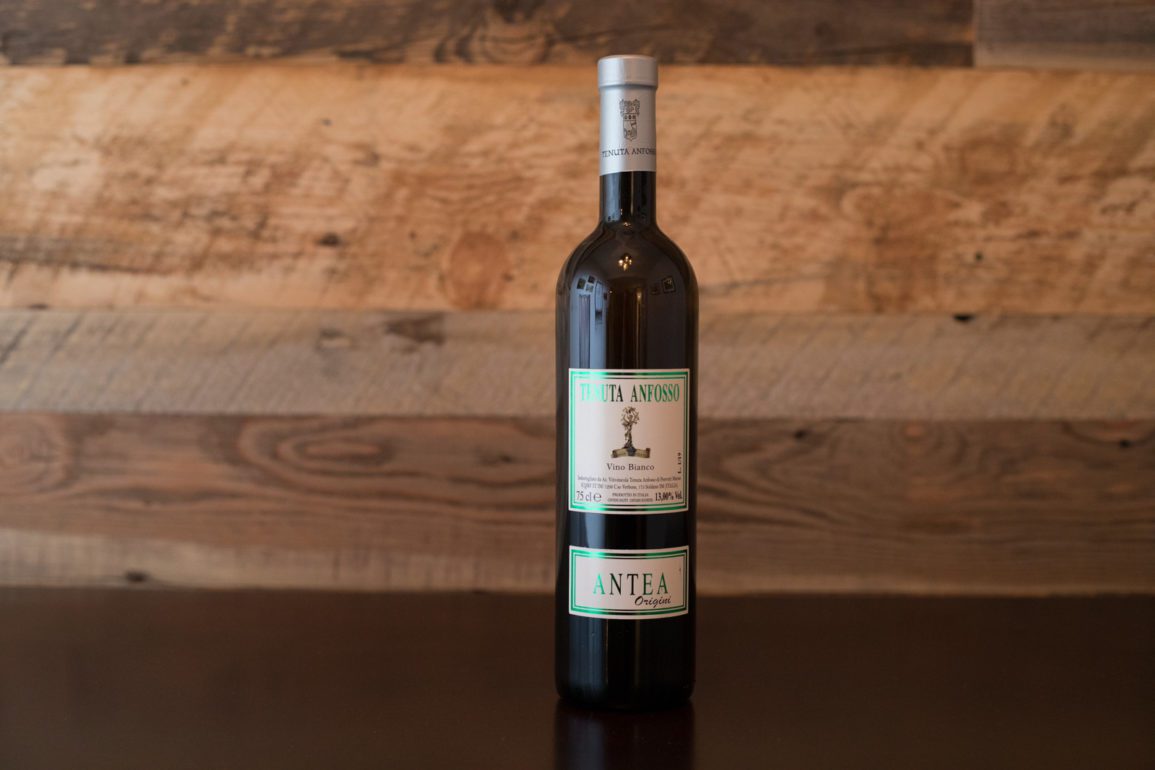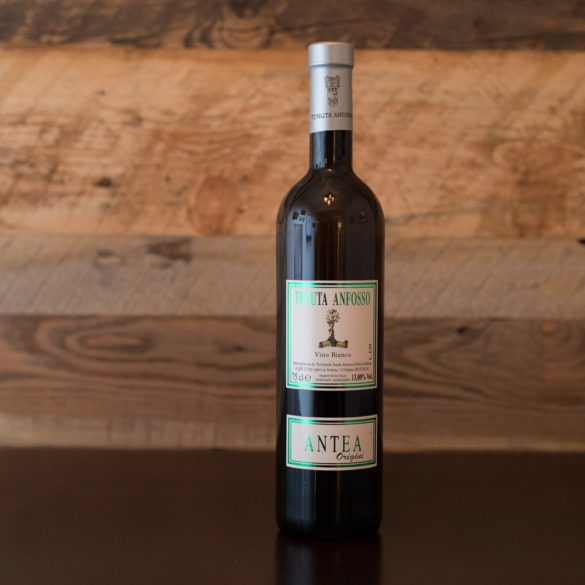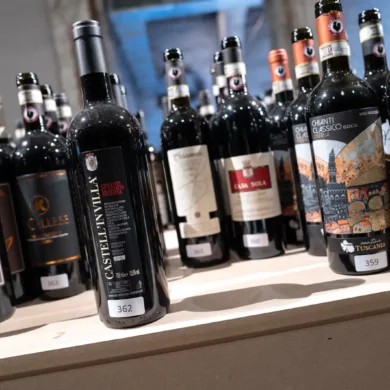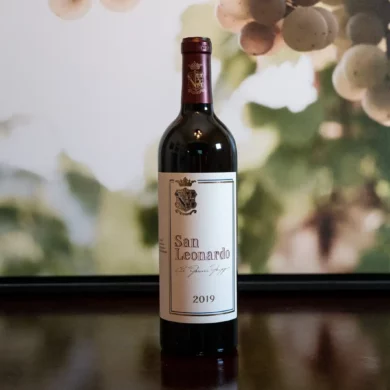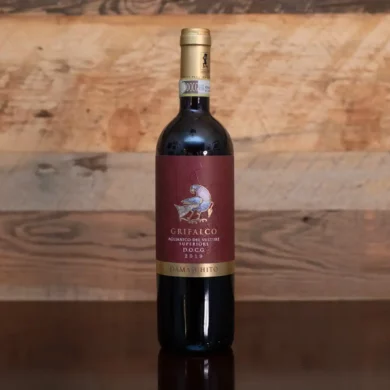For people who love French wine, one importer often springs to mind: Kermit Lynch Wine Merchant. Established by its namesake in 1972 (yep, they’re 50 this year), the Berkeley-based wine importer is synonymous with small, family wineries taking a traditional, artisan approach. I’ve found that perusing their website is akin to thumbing through the vinyl at a record shop, searching for rarities to take for a spin on the turntable.
While smaller and less well-known, the company’s Italian book is as equally enticing as the French one. Among the “deepest cuts” in Italy is Liguria’s Tenuta Anfosso, a mountain estate that dates back to 1888. They happen to possess the oldest vines of anyone of the 195 producers in Kermit Lynch’s book. Want to take a guess at the grape variety and the age?
The date and location might be giveaways (135 years? Liguria = Rossese?), but that’s not quite it. Estimated at 170-years old, Tenuta Anfosso’s pre-phylloxera Rossese Bianco vines date back to the Millard Fillmore days. (Yes, the last member of the Whig Party to hold down the Oval Office. That guy.)
This is Italy: its viticultural filaments are more chaotic than the polypropylene fibers of an N95.
Often thought of as a white-berried mutation of the more widely planted Rossese, Rossese Bianco is exceedingly rare. The grape is thought to have been more widely planted at one time, but — as we found out in our profile on Clos Cibonne and their use of Tibouren, France’s version of Rossese — it was all-but relegated to the dustbin of history for its lack of yield, especially after phylloxera required replanting of the area’s vineyards. The red version in Liguria held on, but the white version nearly vanished. In fact, it is more commonly identified with the Barolo village of Monforte. But in his book Native Wine Grapes of Italy, Ian d’Agata notes that a handful of different grapes claim the moniker, and that the Italian National Registry of Wine Grapes lists the Piedmontese version as the official “Rossese Bianco.” Tenuta Anfosso’s vines are likely the only Rossese Bianco vineyard of consequence in Liguria.
Rossese and Tibouren have captivated me for some time, and when I gathered my resources to expand coverage of the grape here on Opening a Bottle, I reached out to Kermit Lynch Wine Merchant for info on Tenuta Anfosso, as well as Punta Crena, another Ligurian producer who makes a snappy red Rossese.
“Rossese Bianco [was] almost all torn out for higher-yielding and more marketable varieties,” Anthony Lynch wrote to me. “Of what’s left, most is misidentified (much of it is Grillo, I heard, strangely enough).”
How Grillo — the Sicilian variety that enhances Marsala and has become a delicious mainstay alternative to Sauvignon Blanc — found its way into Liguria is one of those threads we’ll have to pull on another time. This is Italy: its viticultural filaments are more chaotic than the polypropylene fibers of an N95.
Why does any of this matter? Good question. Old vines regularly make up for their lack in quantity with an abundance of character. We may be used to ancient-vine Grenache or even Nerello Mascalese, but to drink an old-vine white wine is a unique opportunity. Here, Tenuta Anfosso takes a macerated approach that tilts the scales toward orange-wine territory, a technique that extracts as much detail as possible from the skins, and which stains the liquid amber. After two weeks of fermentation in stainless steel, the wine is transferred to acacia barrels for nearly a year.
The resulting wine seems muted and shy on the nose, yet still yields surprisingly “red” aromas akin to black cherry and violets. On the palate, its smooth, easy-going disposition sinks in and makes itself at home. It cannot be compared to other Liguria white wines, such as those from Vermentino, nor can it be held up to the macerated wines of Friuli, for it is far more mellow than that. “Antea” is its own thing: full-bodied, textural, caressing, and evocative of raspberries and citrus on the lingering finish. It is a holdout from another era, that thankfully, continues to yield very small amounts of something special.
2017 Tenuta Anfosso “Antea” Vino Bianco
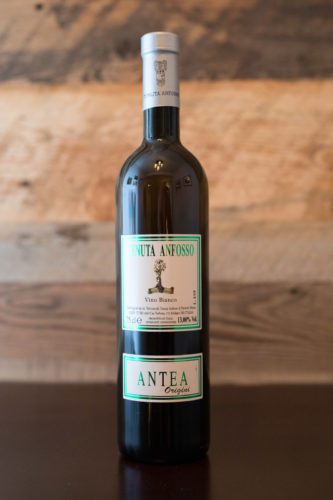 Vinoa da Tavola (Liguria)
Vinoa da Tavola (Liguria)
Grapes: Rossese Bianco (100%)
Alcohol: 13%
Opinion: ★★★★ 3/4 (out of five)
Food-friendliness: Selective
Value: As Expected
A beginner might like … the wine’s mellow disposition and phantom richness. If you are used to Italian white wines of a certain fabric (such as coastal Vermentino or Soave), you might be surprised by the tempo of this wine’s acidity. It is in no rush to get anywhere, like a throwback to another time, yet it has the verve to hold the entire presentation together. And what a beautiful wine, structurally.
A wine obsessive might like … comparing notes to other macerated white wines of Italy. “Antea” only spends four days on the skins, which is relatively short compared to the three months we sometimes see in places like Friuli. But the extraction is enough to lightly tinge this wine with an amber hue and infuse it with delicate berry and floral notes. In my notes, I wrote that if I smelled the wine blind, I would have assumed it was a red.
Note: This wine was provided as a sample by the importer upon a detailed story-pitch request. Learn more about our editorial policy.

